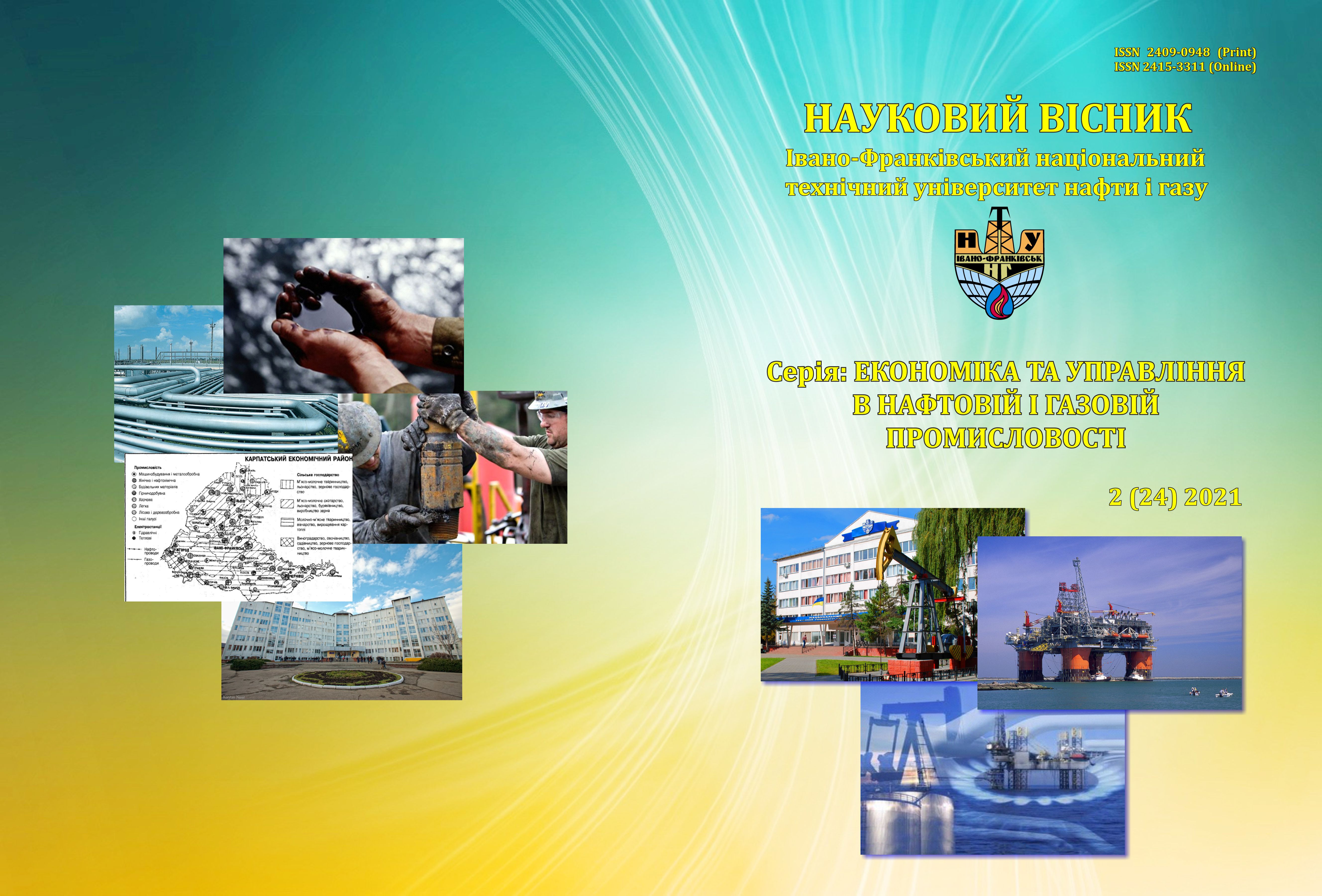ANALYSIS AND EVALUATION OF THE QUALITY MANAGEMENT SYSTEM IN THE IMPLEMENTATION OF THE INTEGRATED MANAGEMENT SYSTEM
DOI:
https://doi.org/10.31471/2409-0948-2021-2(24)-102-110Keywords:
quality, ecological management, competitiveness, standardization, management system.Abstract
Based on the results of the analysis of theoretical and methodological principles of implementation of the integrated management system (ISM) at the enterprise, an algorithm for assessing product quality to ensure its competitiveness in the international market is proposed. One of the most widespead standards included in the ISM is the ISO 14000 series of standards, ie environmental management systems (EMS).
Construction products must meet the requirements of current regulatory and technical documents (standards, specifications, etc.). Requirements for construction products are divided into general and specific. The general requirements of construction products include the quality of raw materials; compliance with the requirements of appearance; indicators of functional purpose; safety indicators; indicators of conformity of marking and packing. Specific requirements for construction products characterize the quality of specific types of construction materials.
An effective method of assessing the quality of goods is the indicator "product rating". The concept of "product rating" is associated with the degree of superiority of one product, one model over others in those conditions in which the operation or use of the product by the consumer. This indicator reflects the organic combination of the technical level of the product, the quality of its manufacture and efficiency in operation. The rating is required to compare models of the same class, type or size. At the same time, with the help of this indicator it is possible to carry out a relative assessment of products of different classes, but identical in functional purpose. The rating is based on a systematic approach to the concept of product quality and its indicators.
To carry out the diagnosis it is necessary to set a score and symbols for the tabular description: ++ (excellent) - 5; + (good) - 4; 0 (satisfactory) - 3; - (with shortcomings) - 2; - (with major shortcomings) - 1.
Therefore, to determine the rating of the product it is necessary to make a differentiated assessment of individual quality indicators, the definition of which will give a general quantitative description of the advantages of one product over another.
An effective method of researching product quality is consumer feedback, using sociometric research, namely questionnaires.
Downloads
Published
How to Cite
Issue
Section
License
Copyright and Licensing Terms
Copyright Statement
The authors who publish in the journal accept the following conditions:
- The authors retain the copyright and grant the journal the right of first publication, licensed with Creative CommonsCC BY-NC-SA , which permits other people to remix, transform, and build upon the material and use the material for non-commercial purposes, give appropriate credit and distribute the contributions under the same license as the original.
- The authors can conclude additional agreements on the non-exclusive distribution of the journal’s published version of the work (for example, publication of the work in electronic repositories) with an acknowledgment of its initial publication in this journal.
- The authors can upload the published articles on the Internet (for example, in electronic repositories or on web-sites), as it will stimulate fruitful scholarly discussions and increase the citation rates of the published articles.


1.png)


1.png)





